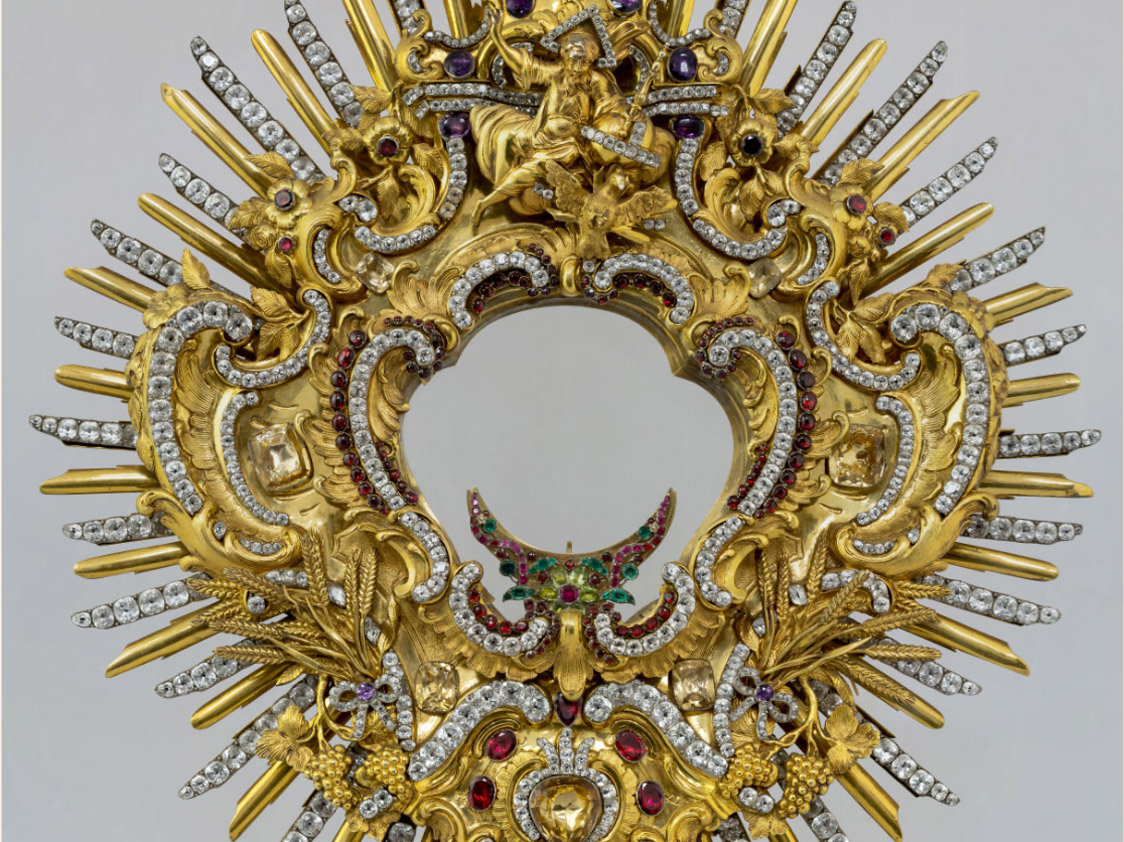On the road to Emmaus
The relief in the back of a stall on the south side of the presbytery. The stalls placed on the northern and southern sides of the presbytery are high-class examples of woodcarving. The seats (66 in all) made of oak wood are late Gothic, created around the middle of the 16th century.
The reliefs in the backs were added later in the 18th century. On the northern side, three quarters were reconstructed in 1864 as a result of damage in the fire of 1813. The front seats are simple and elegant. Their only decoration is profiled and S-shaped partition walls ending at the top with a modest motif of a bifurcated trefoil. Around 1730 quadrilateral pedestals with fanciful rococo vases filled with fruits, flowers and leaves were added.
On the northern side of the reliefs in the backs, we find the following representations: St. Hyacinth, the Annunciation to the Blessed Virgin Mary, Nativity of Christ, Adoration of The Magi, Escape to Egypt, Twelve-year-old Jesus in the Temple, Baptism of Christ, Christ and the Samaritan Woman, Washing of the Feet, Christ in the Gethsemane, Sorrow of St. Peter and Flagellation. The three reliefs in the backs reconstructed in the 19th century concern the depiction of Christ and the Samaritan woman, the Washing of the Feet, and Christ in the Gethsemane.
On the southern side, there are: Crowning with Thorns, Ecce Homo, Bearing of the Cross, Crucifixion, Removal from the Cross, Resurrection, Mary Magdalene and the Risen Lord (Noli me tangere), On the Road to Emmaus, Doubting Thomas, Christ at the Sea of Galilee, Crowning of Mary, St. Dominic.
3D models
)
)
)
)
)
)
)
)
)